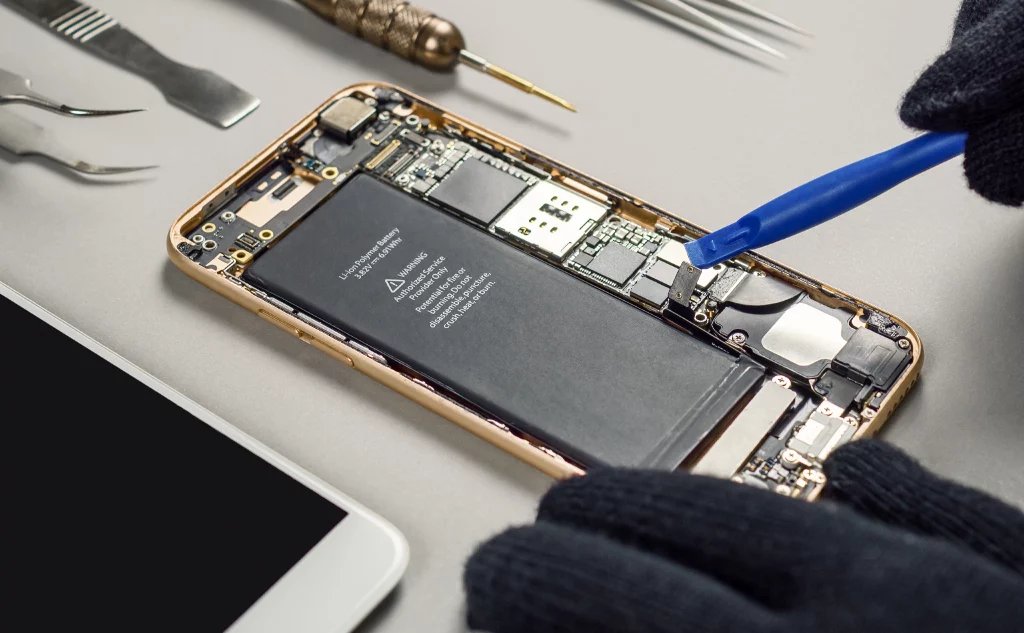The reason your battery drains even when the phone is off boils down to the fact that no battery can hold a charge indefinitely. This might sound surprising to some, especially with the advancements in technology.
The raw physics of how batteries work causes them to slowly lose charge over time, even if they aren’t powering anything.
The age of the battery and its environment also influence this drain. So, delve deeper into the world of batteries with this comprehensive guide.
What Is Draining the Battery of Your Cell Phone? (3 Things)
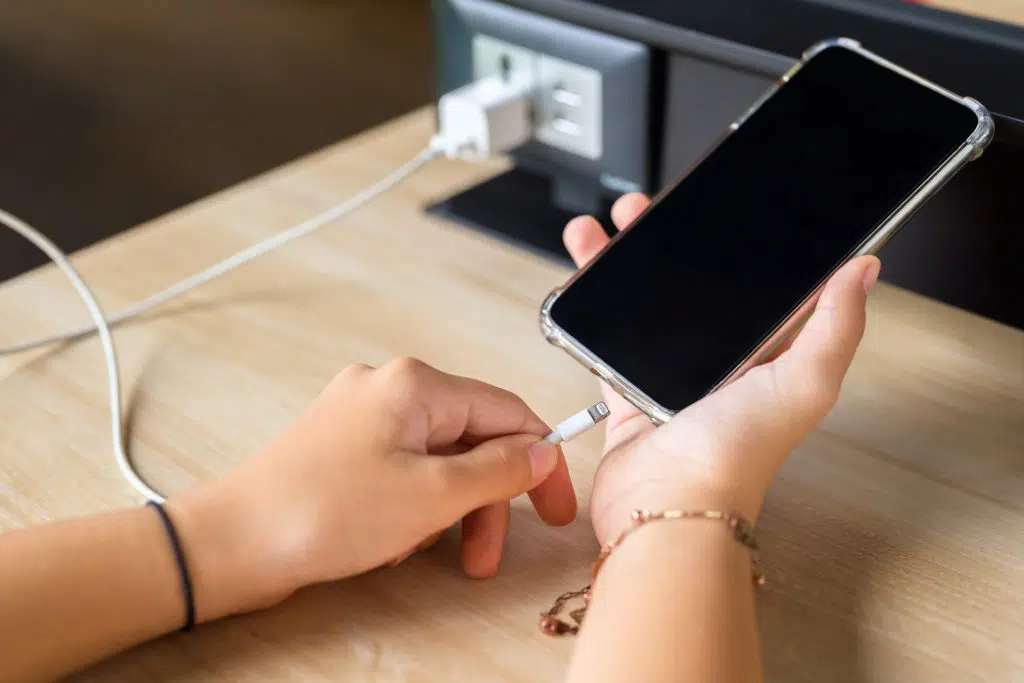
For the most part, there are two things that drain your battery even when it’s turned off. Those are trickle charge and self-discharge.
They are very different physical things that happen to batteries, but both of them happen to all phone batteries. No matter how new or advanced your phone might be, it is still subject to these principles.
#1 Trickle Charge
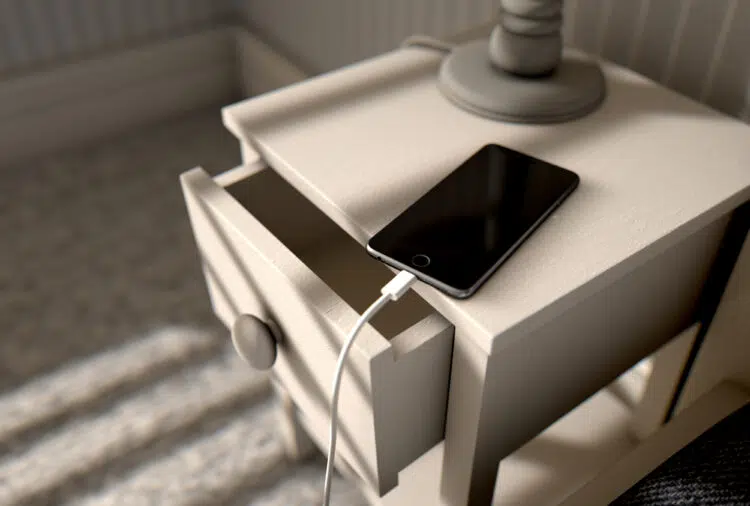
Trickle charge is a phenomenon inherent to all electrical systems. It relates to the way circuits are designed and function. In essence, for a circuit to conduct electricity, it has to be continuous without any gaps.
An analogy here is a simple battery-powered flashlight. Even when the flashlight is off, a minuscule amount of electricity can still be lost to the surroundings.
This phenomenon, known as trickle charge, becomes more pronounced as electrical systems grow in complexity.
For instance, circuits with capacitors, like the ones in your phone, experience more trickle charges than those without them.
To mitigate this, consider using a power bank to charge your phone on-the-go, we love the digital readout on this CFIAI power bank from Amazon.
#2 Self Discharge

Batteries naturally undergo self-discharge, a process where they lose some of their charge even when not connected to any circuit.
This is a chemical process intrinsic to the battery. Due to this, a fully charged battery gradually loses its charge due to the inherent electrical properties of the battery itself.
To date, innovations are ongoing, but no battery has been able to fully overcome self-discharge.
Typically, a regular phone battery, factoring in trickle charge, may require recharging after a week of inactivity.
#3 Battery Age
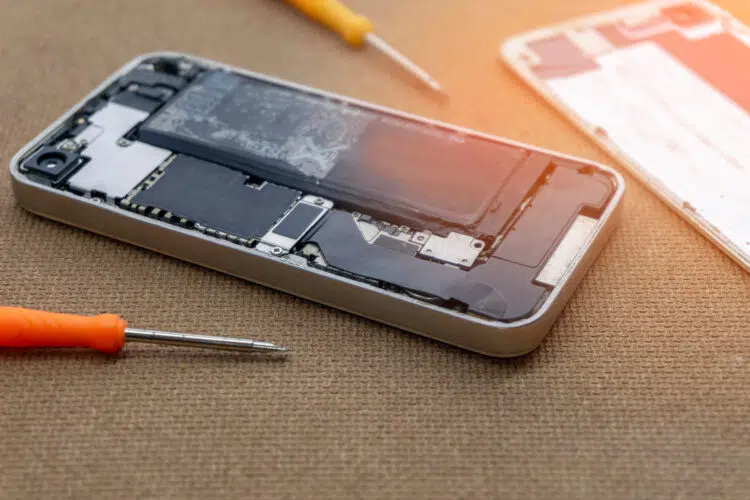
As batteries age, they undergo those chemical changes mentioned above. These changes lower the battery’s capacity to hold a charge.
The overall wear and tear means that the battery can’t last as long between charges as it used to.
Age also causes self-discharge to accelerate. As the battery gets more and more chemically depleted, it is less able to resist self-discharge.
What used to take a week or more can happen in a day or less when a battery is near the end of its life.
Why Is Battery Drain Worse for Cell Phones? (3 Things)

Battery longevity diminishes with age due to the recurring chemical changes each time it charges and discharges. To monitor your battery health and stay updated, consider using a battery health app. [Amazon Affiliate Link: Top-rated Battery Health Apps].
Why Do Cell Phone Batteries Seem to Drain Faster? (3 Reasons)
#1 Percentage Indicators
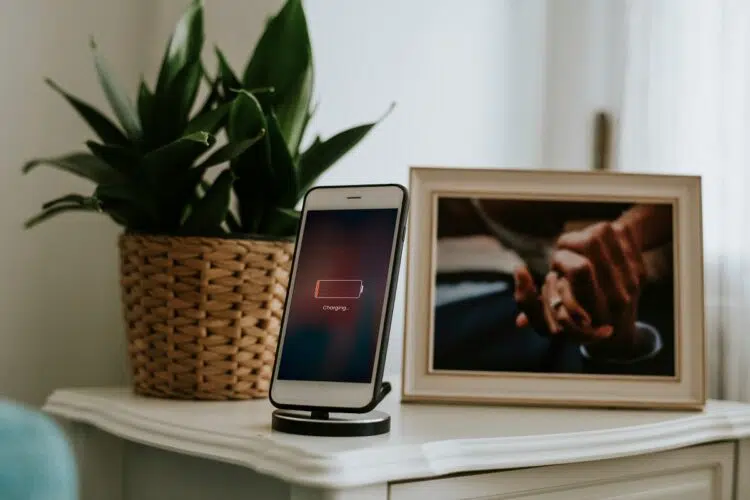
A significant difference between phones and many battery-powered devices is the exact percentage display of charge level on phones.
This clarity can sometimes make battery losses seem more pronounced than they truly are.
#2 Why It’s Never 100 Percent When You Turn It On
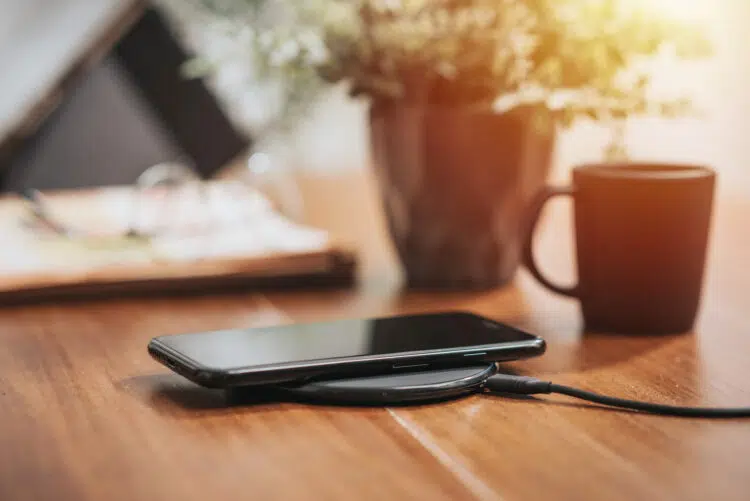
Most phones also don’t actually fully charge the battery. This is because the time to charge a battery increases as you get closer to 100 percent.
So, with a fast charger, you can get a 50-percent charge in a matter of minutes. You can usually get a 90-percent charge in under an hour.
Then, it will usually take multiple hours to get above 95 percent from there. Getting to a genuine 100-percent charge can take days. Some phones will round up to 100 percent when you get close. Others will pretty much never display 100 on the charge level.
#3 Temperature Changes

There’s also an issue with temperature. Phones tend to go with us wherever we are. Sometimes, that can include a journey into very hot or very cold weather.
Extreme temperature changes impact the battery and can reduce its capacity to hold a charge. As long as the temperature changes aren’t too intense, these changes are temporary.
If a phone is kept below freezing or above 120℉ (49°C) for more than a few minutes, the changes can actually become permanent. Extreme temperatures are very bad for batteries and for phones in general.
Do All Batteries Drain When the Phone Is Off? (2 Types)
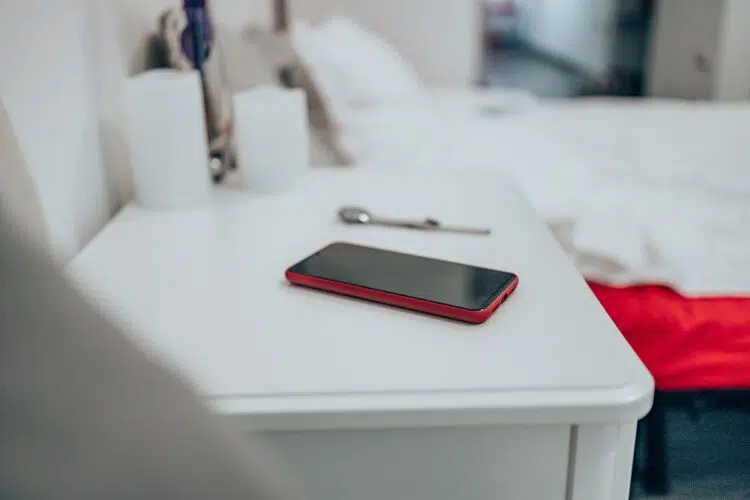
To date, there are no phones that are immune to drain when your phone is off. It’s just how batteries work. That said, the performance of the battery will change depending on how it is made. The best batteries last a lot longer in this scenario.
#1 Lithium-Ion
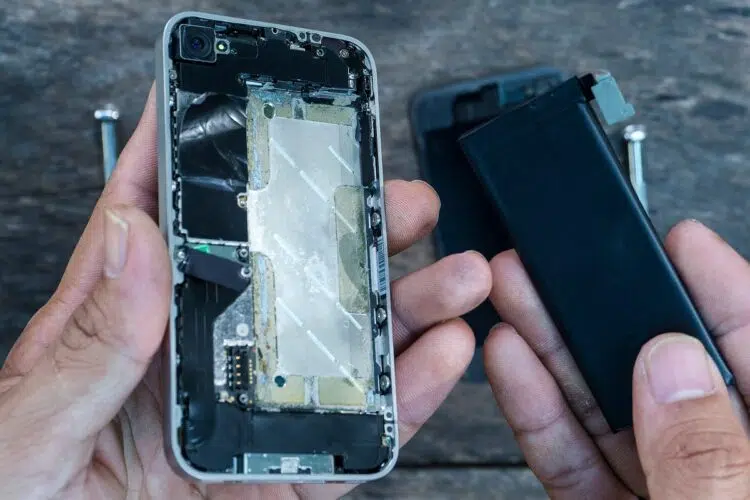
Lithium-ion batteries are the most common rechargeable batteries in the world.
The vast majority of phones use them.
The reasons for this are that these batteries charge faster and hold their charge longer than their predecessors.
That’s why modern phones actually see less discharge while turned off than a lot of earlier phones.
When they were still using nickel and cobalt in the batteries (the ones that would swell a lot when they got old), the batteries would often completely drain even while the phone was off.
These days, a healthy lithium-ion battery can usually last several days while a phone is off. Sometimes, they can last more than a week.
#2 Lithium Polymer
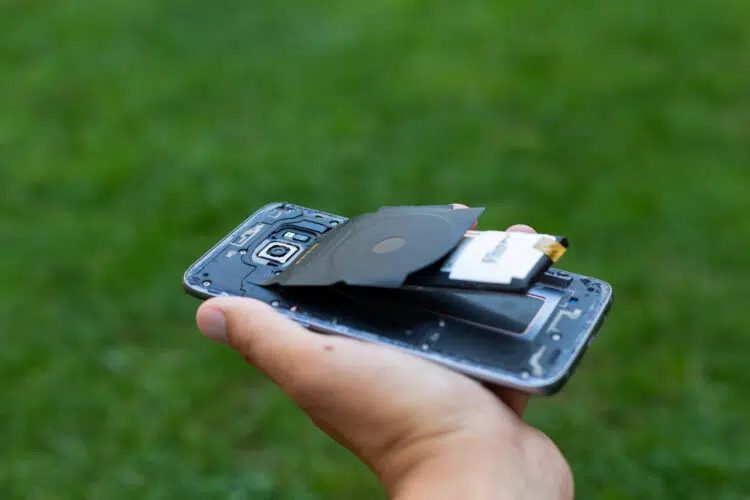
Lithium polymer batteries are newer and more exciting. They are starting to replace lithium-ion batteries in many applications.
For now, they’re still less common. These batteries are still made with lithium-ion technology, but the polymer electrolyte holds the battery in a different medium.
In simpler terms, the battery has less fluid inside of it. That subtle but important change allows these batteries to charge faster and last longer than traditional lithium-ion batteries.
Because they aren’t used widely enough, it’s hard to put a solid number on the difference.
But, in general, you would expect a lithium polymer battery to drain even slower when a phone is off. It could potentially last upwards of a week on average. But, it would still mostly depend on the health of the battery and the phone’s external environment.
What Can Be Done to Stop Battery Drain of Your Cell Phone?
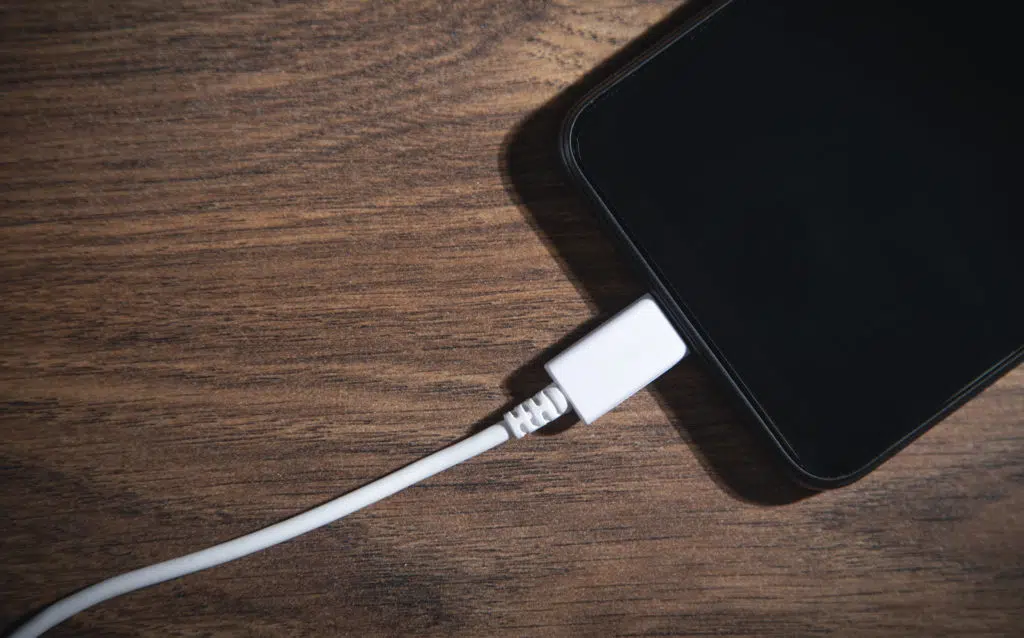
The most important thing to remember is that your phone will drain over time. As that happens, you’ll notice this issue more and more.
You can’t prevent your phone from aging, but you can extend its life. There are two ways to do this. First, try to only do heavy phone usage while it’s plugged in.
While older batteries were prone to overcharging, it’s impossible with lithium-ion technology.
Putting stress on the battery is the worst thing, so if you’re going to play games on the phone or watch ultra-high-def videos, plug in the phone as much as possible. Second, don’t drain your phone all the way. If it happens every once in a while, the battery will be fine.
But, running the battery until the phone dies is stressful for the battery. Avoid it when you can.
On another note, learn all about whether your phone goes straight to voicemail when the battery dies here.

